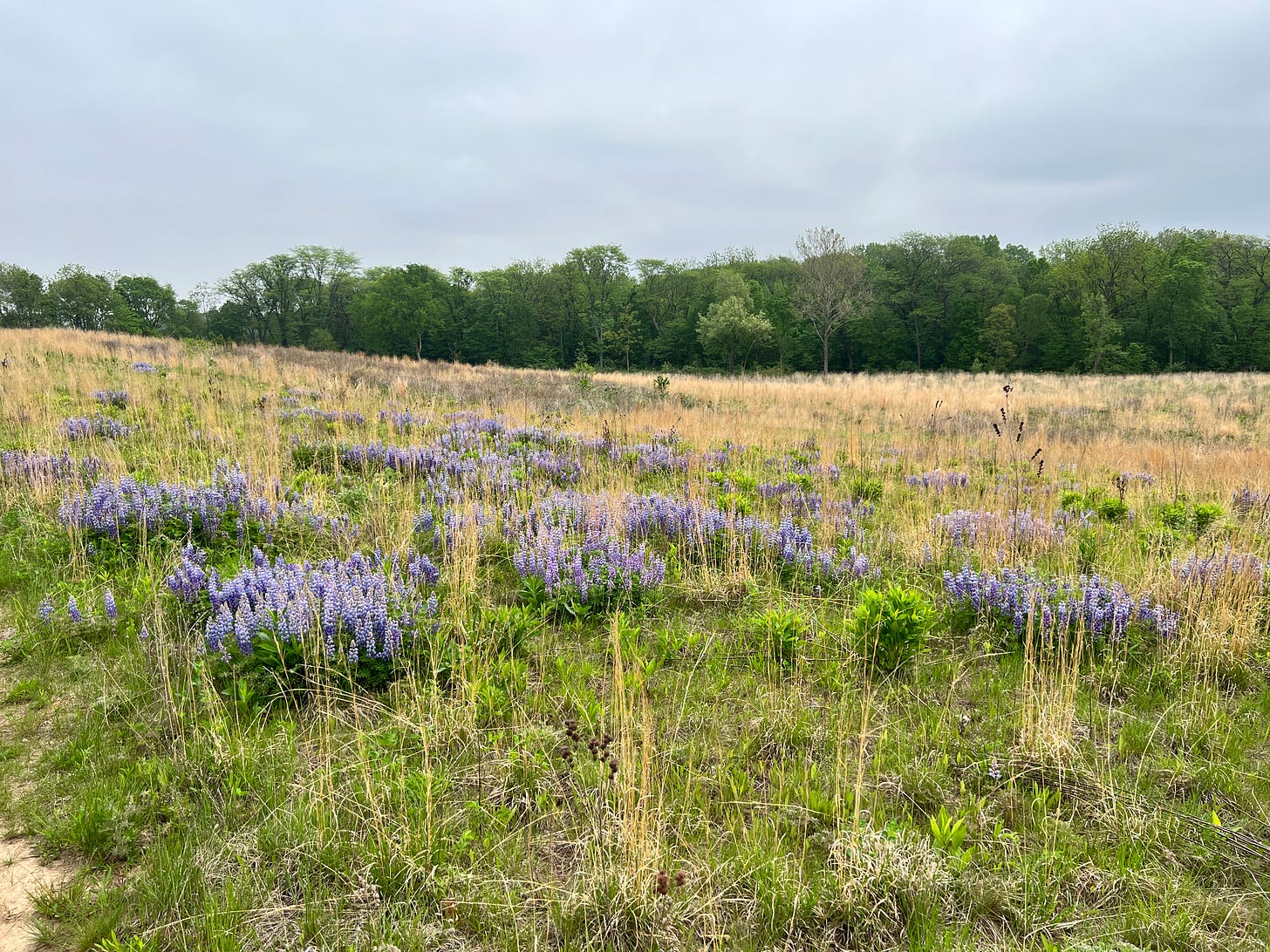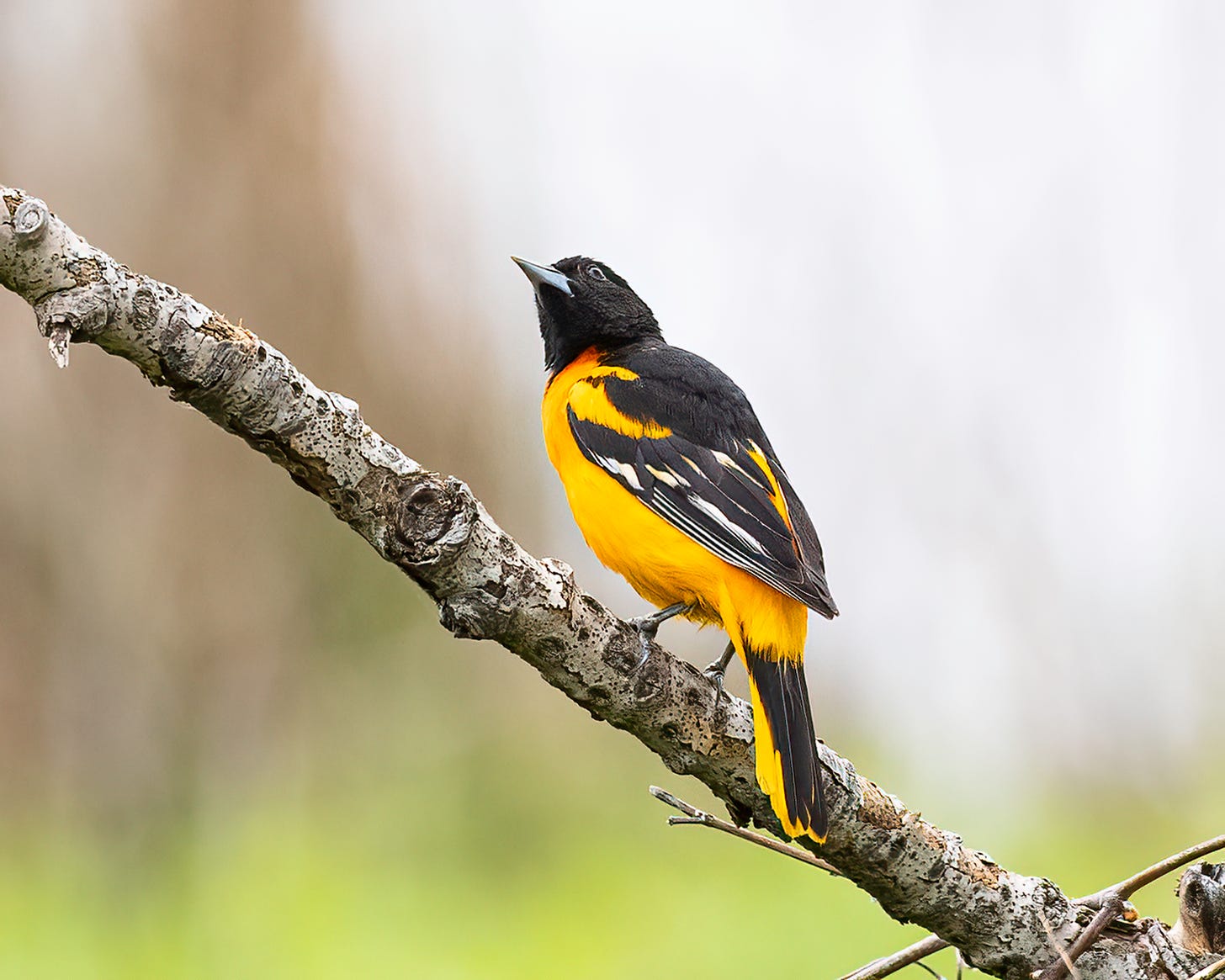A Lusty Big Day: Birds and the Seven Deadly Sins
Love is in the air on World Migratory Bird Day
We have participated in Global Big Day for the past three years. The Cornell Lab of Ornithology hosts this event every year as a way to help people appreciate birds and the birding community. Big Day coincides with World Migratory Bird Day (WMBD), which just reached 30 years of raising awareness about migratory birds and the need for large-scale cooperation to save them. Big Day and WMBD were on May 13 this year, and 58,738 people from around the world reported 7,636 bird species in eBird. This worldwide celebration of birds engages a broad range of people. Some people spend five minutes and report the birds they see in their yard, while others develop an intricate plan and spend 24 hours seeing as many birds as they can see. My wife and I fall somewhere in the middle.
We began the day immersed in dense fog in our backyard, where the first bird we saw was a Blue Jay coming in to visit our feeder. As we were watching the Blue Jay, a Common Yellowthroat song rang out from our gooseberry shrubs, and a pair of House Wrens chased each other through the garden. A few more minutes of standing, listening, and watching added ten more species. Now that our backyard plantings are maturing, our yard has become one of our favorite places to watch birds. We recently had a rare Mourning Warbler spend a few minutes in our yard, which brought our yard list up to 117 species.
When the fog thinned out, we began our 1.5-hour drive to the Dixon Waterfowl Refuge, our favorite natural area along the Illinois River. This Ramsar Wetland of International Importance covers 3,000 acres and includes beautiful, high-quality restored wetlands, prairie, oak woodland, and savanna.
About ¾ of the way through our drive, my wife, Mercy, suggested we take a detour to search for a coffee shop in the small rural town of Lacon, Illinois. I was skeptical that the tiny downtown would support a good coffee shop, but I was wrong. We drove downtown and saw a small crowd gathered outside The Coffee Hub. My wife patiently waited in line for her Chai Latte and returned to say that the place was cute and full of misfits.
Misfits, just like us. We know that spending an entire day birding puts us into a select group. For us, days like this serve as a meditation and retreat from the daily grind. Our judging minds are running in the background all day long telling us we should be doing something more practical and productive. These brief interludes of connection and appreciation for nature help us recharge our batteries and confirm what is most important to us. We spend much of our life skimming across the surface, but in nature we get to tune into our senses and focus. Our bodies and minds become integrated, and we become present and fully aware of our surroundings.
Birdwatching on Big Day is a welcome reprieve during these times when the very air we breathe seems rife with division. When we focus on the birds, we can see ourselves in them, and this prompts us to consider that we can also see ourselves and our common challenges in other people. We can see that the same beauty and life force that makes the birds so compelling is within us. Birds are free to fly and occupy ethereal realms. They can show us the way if we can remain open to learning from them.
With that frame of mind, we were eager to learn from the birds as we made our way north through the thin ribbon of green that is the Illinois River floodplain and associated bluffs. When we turned down the gravel lane and entered the refuge, we passed through a restored sand prairie. We promptly noticed three Lark Sparrows chasing each other with tails flared wide. This established the day’s theme - lust. It was early in the breeding season, and the birds were doing everything they could to attract attention and find a mate.
When we stepped out of our car, the early morning chorus swept over us. Exuberant whistled notes, trills, and chips filled the air. The avian symphony was stunning. The rollicking background of Robin’s song was overlain with a bewildering array of sweet musical notes. The birds were all trying to draw attention to themselves. The backdrop for this performance was a restored sand prairie with big patches of blue lupines in bloom. Beyond them, the prairie faded into the shadows of an open oak woodland that resonated with the songs of warblers. We knew it would be a good day.
We started recording species in eBird and then settled in to decipher the more subtle songs in the mix. Once we identified all the birds we could by sight and sound, we looked to modern technology for an assist. The Merlin App from The Cornell Lab of Ornithology has an impressive sound ID function that records all bird songs in the vicinity and then suggests a list of bird species that are possible matches. This helped us tune in even further. Merlin told us a Henslow’s Sparrow was nearby, but we could not initially pick it out of the louder songs around us.
Once we made our way out into the prairie and things quieted down, we listened for the subtle tsi-lip call of the Henslow’s Sparrow. We eventually found him perched up on a tall dead stem, tilting his head back to deliver his subtle call with gusto. The trail through the prairie eventually took us down to the creek and oak savanna. When we entered the trees, the mix of songs changed, and the high clear notes of Yellow Warblers mixed with the husky chips and wichity wichity song of the Common Yellowthroat.
Yellow Warblers seemed to be everywhere, and we quickly encountered a pair chasing each other through a thicket of brambles. The relatively plain yellow female popped up with down in her bill, and we knew right away that she was building a nest. We backed off, watched the pair, and eventually saw her drop down into the canes to weave together a nest. The brilliant yellow male with chestnut stripes on his chest was nearby watching her every move. There was much singing, posturing, and chasing, eventually ending in the female leaning forward while quivering her wings and holding her tail to the side in a solicitation display that prompted the male to copulate with her.
The energy, fervor, desire, and apparent lust were remarkable. We witnessed many more such interactions throughout the day and upon further reflection realized that while the birds may not be aware of it, they were embodying all but one of the seven deadly sins. Lust, gluttony, greed, wrath, envy, and pride were all on display. The birds spent their day attempting to copulate, gobbling down caterpillars, amassing a harem, chasing rivals away, eying each other’s territories, and flaunting their feathers. Sloth? No time for that.
We watched a pair of Warbling Vireos engage in a remarkably prolonged high-speed chase. They remained about one foot apart as they flew through the canopy twisting, turning, and diving toward the ground. After 30 seconds of chasing, they split up and the male perched out in the open on a branch, panting to cool off. He had clearly exerted himself in his effort to impress the female and win her favor.
Just past the vireos, we came to one of our favorite parts of the refuge, where cool, clear water seeps out of the base of oak bluffs. This wetland still contains sensitive native plants like watercress. The birds seemed as attracted to it as we were. As we admired the seep, we noticed a Ruby-throated Hummingbird fly by with cattail seed fluff in her bill. She disappeared into the leaves of a Bur Oak. We got a little closer and found her in the early stages of nest-building. She would perch atop a base of fluff and wiggle her body down in the center to shape the cavity as she used her bill to weave together the cup around her. We both agreed that she had chosen a perfect spot to call home - the seep was full of native plants, and just up the slope, a restored prairie would provide even more food sources for her.
Finding the hummingbird and her nest was the last new sighting on our trip to the refuge. We made our way back to the car where we tallied our sightings. At that point, we had documented 95 different species of birds. We picked up a few more on our drive to Evergreen Lake, where we checked some birding hotspots. We finished the day back in town at urban parks, where we added five more birds, including a rare Connecticut Warbler. This was a lucky surprise and a great way to end the day.
Our final total for the day was 107 species. The largest list in the world included 968 species and was submitted by a group associated with the National Service of Natural Areas in Peru. We enjoy being part of this worldwide citizen science project and spending a day appreciating birds in our area during the peak of migration. They come and go so quickly, it can be easy to miss them as they forage in the dense green leaves. We are already making plans for next year.












You captured everything magical and life-affirming about birding in this post!
Jamie Wyeth pained Herring Gulls acting out the Seven Deadly Sins. I have a copy of the book, which is amazing: https://www.farnsworthmuseum.org/exhibition/jamie-wyeth-seven-deadly-sins/#:~:text=The%20subject's%20focus%20is%20human,century%20Dominican%2C%20Saint%20Thomas%20Aquinas.